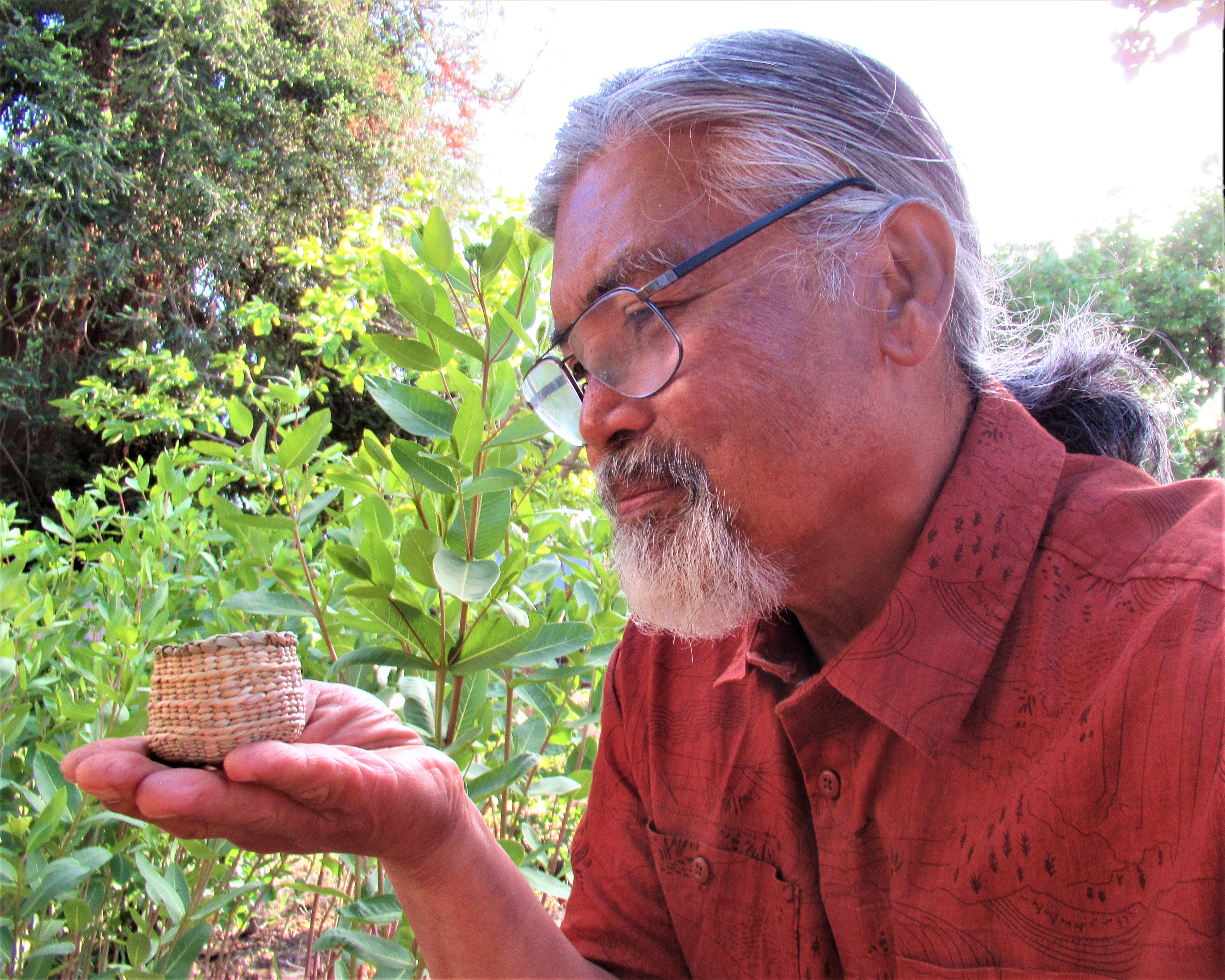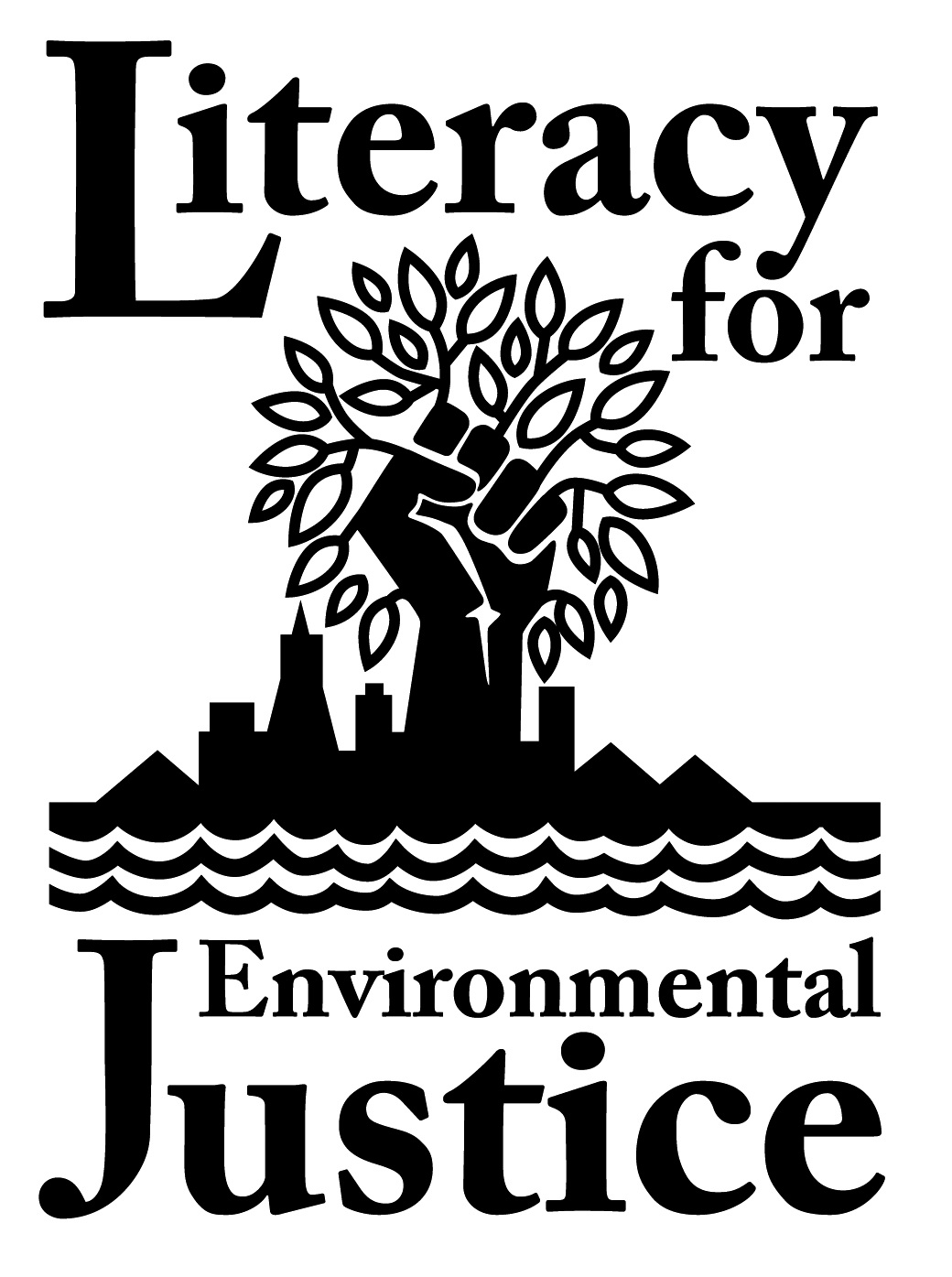
Dino, our instructor, holding a small juncus basket.
In April 2021, Eco-Apprentices participated in an online workshop with Dino Labiste, Parks Naturalist at Coyote Hills Regional Park, part of the East Bay Regional Park District. Dino used the list of plants grown by Eco-Apprentices in the nursery for restoration work to share ethnobotanical information about each plant. Dino also gave background information about First Peoples, specifically Ohlone Peoples and other indigenous tribes in Northern California. Dino discussed native land stewardship practices that improve the health of plants and landscapes, protect against excessive wildfires, and promote plants that can be used culturally. Three of our Eco-Apprentices shared their reflections.
“The Eco-Apprentices had the wonderful opportunity to be a part of an Ethnobotany workshop led by Dino! Dino took the time to share some really interesting and relevant information about some of the different native plants we have here at our nursery. He shared some of the traditional Indigenous knowledge that’s been shared with him over the years that highlighted the different uses certain plants historically have had. We learned how rubbing ceanothus flowers together could create a lather and could be used for washing your hands. Another really amazing fun fact is that yarrow—Achillea Millefolium— can be used medicinally as a pain reliever and fever reducing agent. Dino spoke about how Indigenous groups are experts in stewarding the land and have knowledge that is cultivated generationally. This workshop made us all feel a little more excited about the plants we grow and nurture! Whether it be how a plant could be eaten, or used medicinally, we all left learning something new about California native plants. Thank you Dino!”
-Eunice Quintanilla
“I felt so lucky to listen and see Dino’s presentation on California natives and ethnobotany. It was easy to tell he has been teaching for a while, and that his knowledge is based on experience. It’s empowering to be taught how the plants around us can be used to our advantage. My first reaction to the information he told us was realizing how crucial it is to highlight and reteach the practices and history of indigenous peoples. If it was not for them, we would not have a healthy environment to support ourselves because they were the ones who tended to the land for thousands of years. My favorite part of the presentation was about land management. Indigineous people know how the land needs to be burned to promote growth and that plants should be pruned in the Spring/Fall to help remove insects and pests. I think a lot of people have a notion that nature should be untouched and kept away from people, and I don’t agree with that. We can learn from indigineous people, the original keepers of the land, that ecosystems need care and tending to be healthy. Through the colonization of indigienous land, we are seeing the consequences in the form of climate change. I truly believe the only way to mitigate climate change is to give land back to indigineous communities and fully support their knowledge of the land. Dino’s presentation helped support why this is so important.”
-Nina Omomo
“The presentation that Dino gave was very informative on the plants that we work with. One of my favorite facts that I really enjoy is now knowing that you can wash your hands with the ceanothus and that it actually lathers up. It was also nice to have some insight as to how the plants were and are still used by the indigenous peoples from this area of California. The artifacts that he showed as well were really fascinating, seeing the musical instrument and a little basket that was done out of the plants was a great example as to how when working with nature there is something cool and useful that can come out of it and how that can have a significance, culturally, for many. The ethnobotanical uses that many plants had was also very interesting to hear. And what was really cool too is that many of them are able to be used for various ailments and many can be used for the same issues and how there were some that were only applied to certain ailments. Being able to take the time to explain all of that and also being able to give more of an insight as to what can help if trying to get a job with the Coyote Hills Regional Park and what they would ask of someone in the interview process is good in case any of us are interested in applying. Overall, it was a wonderful experience to have and I hope LEJ continues to have someone teach this because it has ties with what LEJ does and the ties that are with the earth and the people that were here first.”
-Azucena Salas

Ethnobotanical items made by Dino . The six items with the triangular design is a staves game. The staves are made out of blue elderberry and the counting sticks are willow. There is also a soaproot brush made from the soap plant. The looped stirring stick is made from a coast live oak branch. The clapper stick and the flute are made from blue elderberry.
